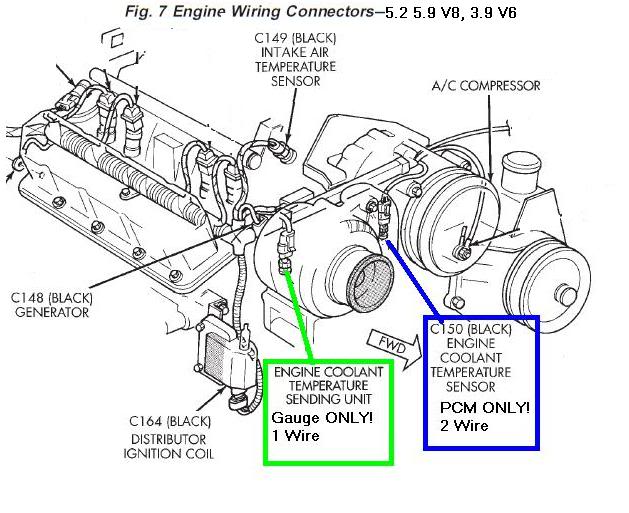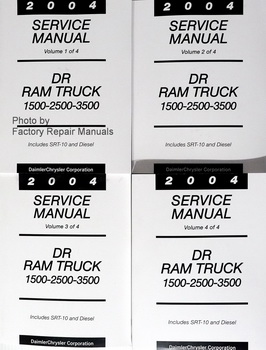Service Manual For Dodge Magnum V6 2018
Dodge Magnum Overview Manufacturer (1979-1988) (2005-2007) (2007-2008) The Dodge Magnum is a nameplate used by several vehicles, prominently as a large coupe marketed from 1978 to 1979 in the United States as well as a introduced in 2004 for the 2005 model year and produced until the end of the 2008 model year and assembled at Plant, near, Canada. In Brazil, the Magnum was a top of the line version of the local Dodge Dart from 1979 to 1981. In Mexico, the Dodge Magnum was a sporty rear-wheel drive two-door car based on Chrysler's M body (American /). It had a 360 CID (5.9L) V-8 engine with a single 4 barrel carburetor rated at 300 hp (224 kW). From 1983 to 1988 Dodge marketed a sporty two-door K-car with available turbocharger from 1984 on as 'the Magnum'.
Service Manual For Dodge Magnum V6 2018. Thanks to the wide availability of the Internet all over the world, it is now possible to instantly share any file with. 37 Shop service repair manual series D5 144 pgs by Dodge car D-5 D 5 (37_3932): $36.95.
Four engines were offered for the Mexican Magnum K, a SOHC I-4 2.2L (K-Trans-4), a turbocharged SOHC I-4 2.2L (1983–86) and two other 2.5L SOHC I-4s, with and without turbocharger (1987–88). The Mexican front-wheel drive Magnum was officially called 'Dodge Magnum 400' between 1983 and 1984, as it was a sporty Mexican variation of the American Dodge 400 of the early eighties. For 1985, the '400' suffix was dropped.
For the 1987 season, the turbocharger received an intercooler and the power from the turbo engine changed from 140 to 150 hp (112 kW). 2017 rm85 clutch manual. Contents. United States 1978–1979 United States (1978–1979) Overview Also called Dodge XE Production 1977–1979 Assembly, Canada Body and chassis 2-door Related Powertrain 318 cu in (5.2 L) 360 cu in (5.9 L) V8 400 cu in (6.6 L) V8 3-speed Dimensions 115.0 in (2,921 mm) Length 215.7 in (5,479 mm) Width 77.2 in (1,961 mm) Height 53.1 in (1,349 mm) Chronology Predecessor Successor 1978 The Magnum was introduced for 1978 to supplement the. It was sold in two forms, the 'XE' and the 'GT' and was the last vehicle to use the long running. The appearance was somewhat of a rounded off Charger, and was in response to getting a car that would be eligible for that would be more aerodynamic, something that the 1975-1978 Charger was not. Styling features included four rectangular headlights behind retractable clear covers, with narrow, and an optional T-bar or power sunroof. The Magnum was well-featured with power steering, brakes and seats; the suspension included Chrysler's standard adjustable, longitudinal torsion bars, lower trailing links, and front and rear anti-sway bars.
The base engine was the 318 cu in (5.2 L) V8 with, while two and four-barrel carbureted 360 cu in (5.9 L) and 400 cu in (6.6 L) V8s were optional; weight was nearly 3,900 lb (1,800 kg). 1979 During the start of the 1979 model year, the 400 V8 engine was dropped from the options list as Chrysler stopped producing big-block V8 engines in production cars during the end of 1978 model year. A performance model, the 'GT' had been available with the 400 cu in (6.6 L) V8 during the previous model year (1978) and the 'E58' police interceptor (360 V8-195 HP) engine was available during the 1979 model year along with HD suspension, special axle, special 'GT' badging and a 'turned metal' dash applique.
Technology was advanced for the time with an onboard spark control computer from inception, electronic ignition, and a lockup torque converter. During the end of the 1979 model year, the mid-size B-body Dodge Magnum (along with its mid-size B-body based Chrysler Cordoba counterpart) was discontinued, as was with just the Magnum name itself, in favor of what would become a smaller, all newly designed, M-body platform based coupe (which also would be shared along with what would become its M-body platform based Chrysler Cordoba coupe counterpart as well) all during the next four model years (1980-1983). Only 3,704 1979 Dodge Magnum coupes included a T-Top. NASCAR The mid-size B-body 1978 (and 1979) Dodge Magnum coupe in the United States and Canada was an addition to 's line up that allowed to continue racing with a. For the 1978 season, the 1974 Charger that Chrysler teams had continued to use was no longer eligible for competition. Chrysler worked on several car designs to smooth out the current 1975 bodied Charger into something that would be reasonably aerodynamic for the big racetracks and the Magnum design was settled on in the summer of 1977 for use in the 1978 racing season. While not as aerodynamic as the 1974 Charger body, the shape of the Magnum showed promise, and the 'Petty Enterprise' built test cars reached 190 mph (310 km/h) on test runs.
At first it seemed that out on the tracks the cars ran well with Petty almost winning his Daytona 125 (finishing second), and leading over 30 laps of the Daytona 500 until a blown front tire caused him to wreck. However, the lack of factory development support of the small-block Chrysler 360 V8 as a race engine was becoming more of a problem, and in high speed racing traffic the Magnum did not handle well.
Petty was particularly harsh in his criticism of the car - before the season he declared, 'The Magnum is undriveable at 190 MPH.' By the latter half of the 1978 season, Petty and (the two top Mopar teams) gave up on the car's inconsistent performance and switched to and, leaving independent drivers (who bought a few of Petty's Magnums, along with some parts) and, and C&W singer to soldier on without any substantial factory support (Chrysler did provide sheet metal and some engine parts to teams driving Magnums). From August 1978, from two to five independent teams showed up with Magnums in NASCAR races, until January 1981, when NASCAR switched to smaller bodied cars. The Magnum never enjoyed the racing heritage of its predecessors, but it was not without its own achievements. Petty scored 7 top five finishes in his 17 races with the car, and Bonnett won three poles and scored 5 top five finishes with his. Petty recognized the Magnum with a commemorative decal, depicting his famous number 43 emblazoned on a Magnum for his 1992 Fan Appreciation Tour. Though Petty never won a race in a Magnum, his son, drove one of his father's year-old Dodge Magnums in his first race (1979 Daytona ARCA 200), and won.
Kyle raced in five NASCAR races using the left-over Magnums in 1979, but wrecked them beyond reasonable repair by the 1980 Daytona 125. As of December 2012, only two NASCAR Magnums still existed; one (an ex-Petty car) resides in the Talladega NASCAR museum, and the other; (' 1978 Magnum No. 42) has been restored and is owned by a private party in southern California. The owner occasionally races it in the vintage NASCAR series. Second generation Second generation Mexican Dodge Magnum 400/Magnum K (1983–1988) Overview Production 1983–1988 Assembly, Mexico Body and chassis 2-door Related (USA) K (Canada) K (USA) (USA) Powertrain I4 4-speed 5-speed 3-speed Chronology Successor The K-car based Mexican Dodge Magnum was a sporty 2-door compact, based on the Dodge Aries coupe body (with blackout 1982-1985 Dodge 400 grille in 1983-1985 and a blackout 1986-1988 Plymouth Caravelle grille in 1986-1988) offered from 1983 to 1988 with available turbocharger ('TurboChrysler' engine) from 1984 on. Four engines were offered for the Mexican Dodge Magnum K, a SOHC I-4 2.2L (K-Trans-4, 1983–86), a turbocharged SOHC I-4 2.2L (1984–1986) and two other 2.5L SOHC I-4s, with and without turbocharger (1987–88). When it was introduced, the Mexican Dodge Magnum 400 Turbo was advertised as 'Mexico's fastest car' in the TV commercials of the time, and it surely was in 1985, when the 'Fox' (1979–1984) 5.0L Mexican Ford Mustang was dropped from the catalog of Ford Mexico.

The Mexican front-wheel drive Magnum was officially called 'Dodge Magnum 400' between 1983 and 1984, as it was a sporty Mexican variation of the American Dodge 400 of the early eighties (without the vinyl roof of the US version and with high output 2.2L engine (available turbocharger from 1984 on), heavy-duty suspension, sporty wheels, tires, dash, steering wheel, console, shifter and seats). In 1984, the Mexican Magnum 400 Turbo was the closest thing to an American Dodge Daytona Turbo south of the border. For 1985, the '400' suffix was dropped. For the 1987 season, the turbocharger received an intercooler and the power from the turbo engine changed from 140 to 150 hp (112 kW). The K-car based Magnum was replaced by the Mexican Chrysler Shadow GTS for the 1989 model year. Interior The Magnum name was revived in 2004 as a 2005 on the.
The new Magnum was a station wagon version of the manufactured at the same plant in, Canada. The Magnum had four engine options; the SE features the 190, the SXT had the 250 hp (190 kW), and the RT had the new 340 hp 5.7 L. The SRT-8 has a 425 hp 6.1 Hemi engine. Became an option in 2005 on SXT and RT models. The SRT8, AWD SXT, and the RT use a -derived 5-speed, while all other models use a four-speed automatic.
Service Manual For Dodge Caravan

The Magnum was on 's for 2005. SRT-8 Production numbers for the SRT-8. 2006-2,970 2007-921 2008-239 A high performance SRT-8 version debuted at the 2005. The SRT-8 was based on a concept car that was displayed at the 2003 Los Angeles Auto Show. It went on sale in 2005 as a 2006 model.
Like the SRT-8, it featured the new 6.1 L (370 cu in), which produces 425 hp (317 kW). 20' wheels, firmer suspension, bigger brakes (Brembo), new lower-body treatment, and a revised front and rear-fascia completes the transformation. The SRT-8 was named Best New Modern Muscle Car in the 2006 contest. Test Results:. 0-60 mph: 5.1 sec.
0-100 mph: 11.7 sec. Standing 1/4-mile: 13.1 sec @ 108 mph (174 km/h). 2008 Dodge Magnum SRT-8 For the 2008 model year, the Magnum received a facelift as well as an updated interior in line with that of the Dodge Charger. The front fascia sported new aggressively squared off headlights and a smaller rectangular grille more reminiscent of the Charger.
The SRT-8 variant gained a new hood scoop. A new bright red paint scheme was introduced. The new changes brought the car closer to its Charger platform mate, away from the. Cancellation On November 1, 2007, Chrysler announced that, as part of its restructuring plans, the Dodge Magnum would be one of four models discontinued after the 2008 model year. In Chrysler's words: 'The Magnum, along with the PT Cruiser convertible, the Crossfire, and the Pacifica were not earning their keep'. Production ended on March 28, 2008.
The Dodge Magnum, (along with the short-wheelbase Dodge Caravan), has been replaced by the. Sales Calendar Year Sales 2004 39,217 2005 52,487 2006 40,095 2007 30,256 2008 6,912 2009 113 References.
Dodge Magnum For Sale
REAL BOOK 136 page book about all versions of the 1990-1999 Mitsubishi 3000GT & Dodge Stealth including VR4 Turbo R/T Spyder & Convertible in New never-opened condition We have over 1,734 other different Dodge Books & Manuals in our Seattle store that we are working on lisiting. We have over 726 other different Mitsubishi Books & Manuals in our Seattle store that we are working on lisiting.
Dodge Magnum Reviews
We have over 32 other different Stealth Books & Manuals in our Seattle store that we are working on lisiting We have over 26 other different 3000GT Books & Manuals in our Seattle store that we are working on lisiting.